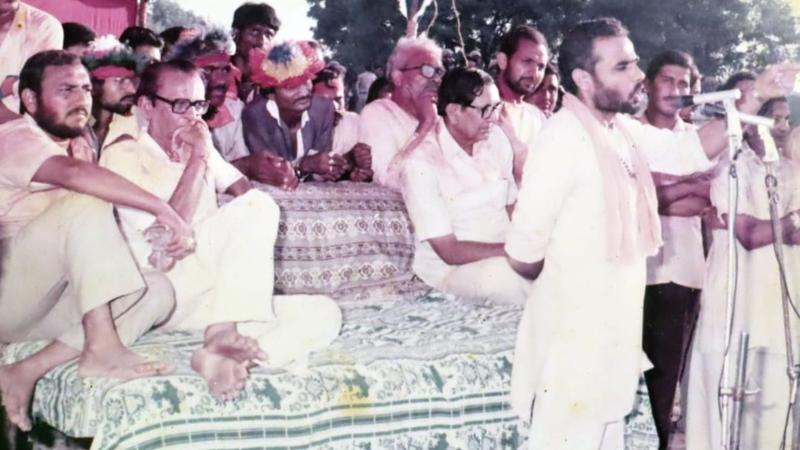Published 13:48 IST, August 26th 2024
Janmashtami of 1984: How Young Modi United a Town to Stop Riots
Taking you through the Janmasthami of 1984, when young Modi united Prantij town in Gujarat's Sabarkantha district which was on the brink of communal violence.

New Delhi: People often discuss how Prime Minister Narendra Modi takes the road less travelled to address complex challenges and skillfully navigates through dire situations. A closer look into his life uncovers numerous such occasions, not only in recent times but also during his younger years.
One such instance dates back to a Janmashtami in the early 1980s, when he was serving as a Pracharak in the RSS. In 1984, the small town of Prantij in Gujarat's Sabarkantha district was on the brink of communal violence. Tensions were high, and violent elements were wreaking havoc across the region, causing widespread fear among the Hindu community and forcing many families to flee.

Concerned RSS workers, fearing for their safety and looking for solutions, traveled nearly a hundred kilometers to seek Narendra Modi's guidance in Ahmedabad. After listening to their concerns, Modi assured them he had a plan and asked them to return to Prantij. Modi soon visited Prantij and called meetings in two major localities: Badi Bhagol and Nani Bhagol.
These gatherings included not just RSS workers but representatives from various segments of the community—leaders of Hindu communities, social groups, associations, spiritual organisations, and prominent figures of the region. Although the RSS had only a few workers and shakhas (branches) in Prantij, Modi aimed to bring together a broader coalition. He made them realise that the path to a lasting solution was not through violence.

His message was clear: violence only deepens divides. The real solution lay in unity. Modi proposed that the Hindu community come together through a social event. With Janmashtami approaching, he suggested using it as an opportunity to showcase unity. Narendra Modi's proposal was met with enthusiasm.
Residents of Prantij recall his powerful speech delivered near the local temple. He proposed organising a grand Janmashtami procession, or Shobha Yatra, where different sects and communities would come together. The procession was to be a grand affair, featuring decorated Raths (chariots) with images of Lord Krishna, accompanied by dancers and musicians, all adding to the grandeur of the event.

The idea quickly gained traction. Modi personally oversaw the preparations, encouraging people to decorate vehicles including tractors and bullock carts as Raths. He even organized a competition for the best-decorated Rath and asked each locality to participate. Streets were adorned with welcome gates, and elaborate arrangements were made for food and water. Narendra Modi, a meticulous organiser, ensured no detail was overlooked. Every segment of Hindu society was involved in the Shobha Yatra, regardless of caste or sect.

Modi conducted several meetings across Prantij, aiming to make it a Jan Andolan, a mass movement—a concept he continues to promote at the national level. On the day of the Shobha Yatra, Prantij looked different. Thousands gathered, with streets so crowded that there was barely room to move. Decorated chariots filled the lanes, and the air was alive with bhajans, music, and dance. The town was filled with a powerful sense of community and togetherness. The success of the event had a profound impact on Prantij.
The unity of the Hindu community became a powerful antidote to the violence that had threatened the town. Violence ceased without any direct confrontation, and Modi’s efforts not only quelled the immediate tensions but also helped to expand the RSS network in the region.
Updated 13:48 IST, August 26th 2024




